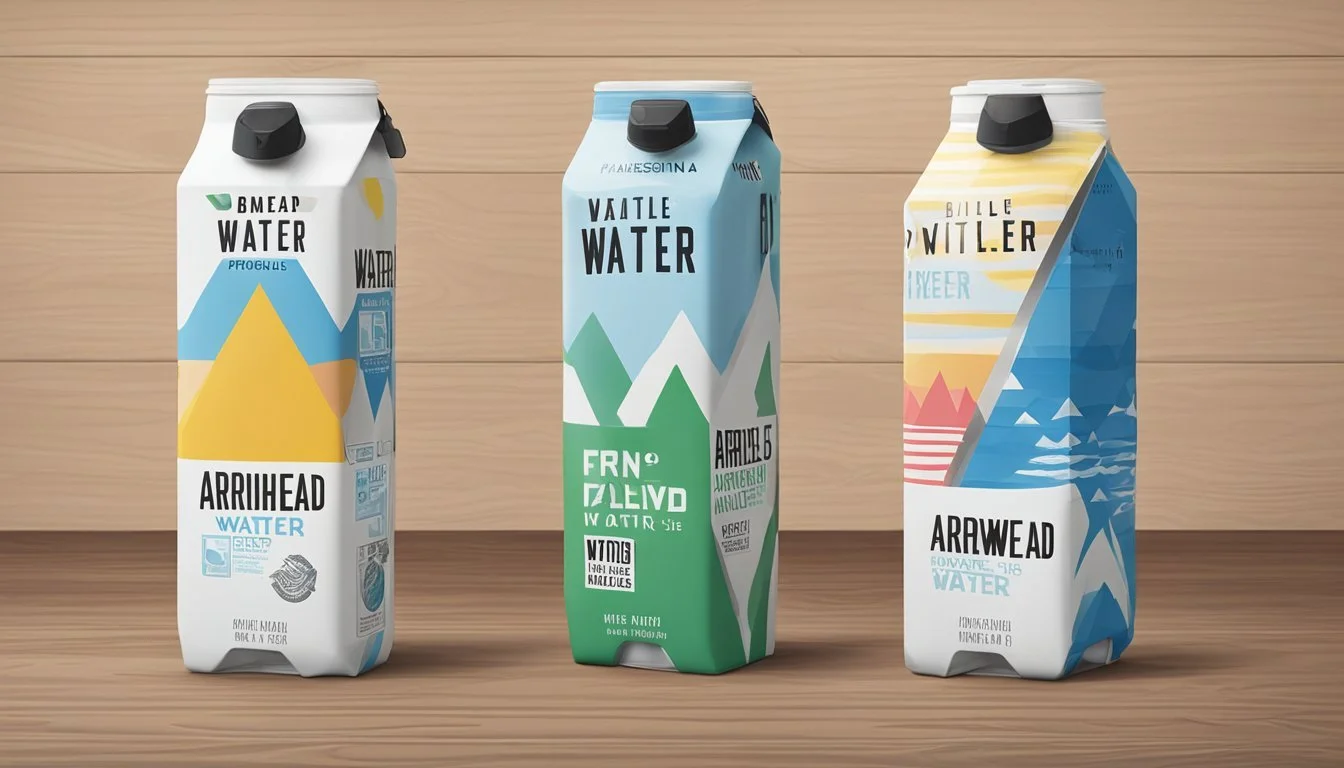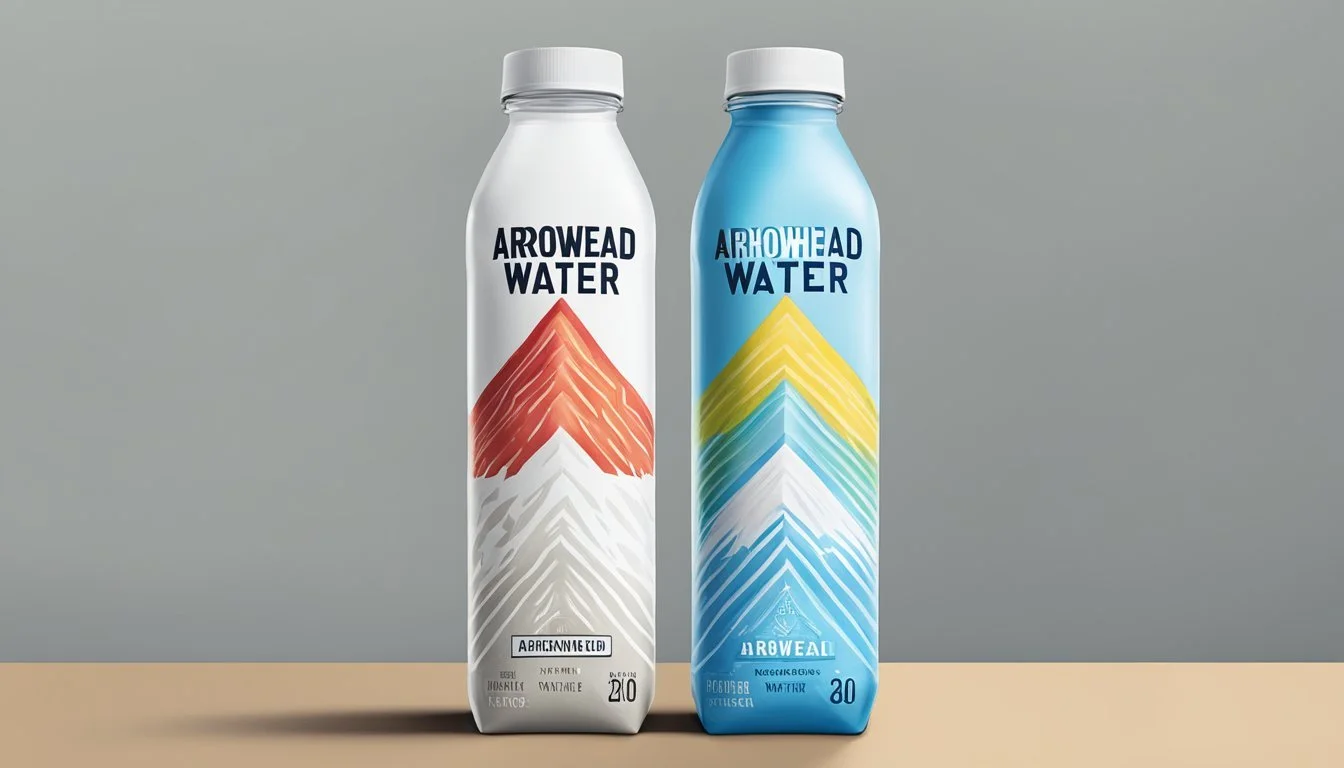Arrowhead vs. Boxed Water
Comparing Quality, Sustainability, and Taste
Choosing the right bottled water can impact both personal hydration needs and environmental considerations. Arrowhead, known for sourcing its water from mountain springs in the western United States and Canada, has long been a staple in the market. However, its taste and quality have been described as unremarkable by some consumers. On the other hand, Boxed Water, a newer entry in the field, presents itself as an environmentally friendly alternative with a focus on sustainable packaging.
Water is essential for life, and the delivery method of water—be it bottled or boxed—plays a role in consumer decisions. While Arrowhead relies on the traditional plastic bottle, Boxed Water opts for a carton-based packaging which claims to be more eco-friendly and easier to recycle. This difference in packaging is a significant consideration for environmentally-conscious consumers looking to reduce their plastic use.
However, packaging is just one aspect of the overall comparison. The source, taste, and processing of the water are also critical factors in determining which brand could be considered superior. With both brands battling for a share of the bottled water market, consumers must weigh the pros and cons, including the environmental impact and the quality of hydration provided.
Understanding Bottled Water
In exploring bottled water options, one should consider the types available, industry dynamics, health implications, and the regulatory framework ensuring safety.
Types of Bottled Water
Spring Water: Often preferred for its perceived purity, spring water originates from underground sources and must flow naturally to the earth's surface or be extracted through a borehole.
Natural Spring Water: Defined by its origin from an underground aquifer, natural spring water flows directly to the surface and is bottled at the source. It typically contains a range of minerals.
Mineral Content: Bottled waters vary in mineral content; some, like Evian, are naturally rich in electrolytes, while others may be artificially enhanced.
Alkaline Water: With a higher pH level, alkaline water, like Essentia, claims to offer health benefits through neutralizing acid in the bloodstream.
Reverse Osmosis: This purification process is used by brands such as Aquafina to remove contaminants, resulting in water that's virtually free of dissolved solids.
Bottled Water Industry Overview
The bottled water industry, dominated by companies like Nestlé and Fiji, has seen growth due to consumer demand for convenient hydration options. The International Bottled Water Association represents the sector's interests.
Global Players: Nestlé (owner of Pure Life), Aquafina, and Fiji are notable for their international presence.
Market Trends: The demand for sustainable packaging propels innovations, such as Boxed Water, to reduce plastic usage.
Hydration and Health Benefits
Hydration is vital for health, and bottled water provides a convenient source. Certain brands like Core Hydration and Essentia boast optimized electrolyte levels for better hydration efficiency.
Electrolytes: Vital minerals such as calcium, potassium, and magnesium, found in brands like Fiji and Evian, are crucial for regulating body fluids.
Health: Clean water free from contaminants like lead or PFAS chemicals is essential for maintaining overall health.
Regulations and Safety
Safety is paramount in the sector, with stringent regulations governing the bottled water industry to protect consumers from contaminants such as lead and PFAS chemicals.
Groundwater Sources: Must comply with legal standards to prevent contamination.
Quality Assurance: Bottlers must adhere to both the Food and Drug Administration (FDA) guidelines and state regulations.
In conclusion, the choice between Arrowhead and Boxed Water depends on individual preferences, environmental considerations, and beliefs on health benefits and taste. Each type of bottled water offers distinct features, from mineral content to packaging sustainability. The growth of the industry highlights society's increasing preference for convenient and safe hydration sources, while the stringent regulations ensure public trust in the quality and safety of bottled water.
Environmental Impact and Sustainability
In the realm of bottled water, the environmental footprint of packaging materials is a critical concern, shaping the sustainability efforts of the industry.
The Issue of Plastics
Plastic bottles, often PET (polyethylene terephthalate), dominate the bottled water market. These bottles, although recyclable, contribute to environmental detritus and ocean pollution when improperly disposed of. Plastic bags, another ubiquitous form of pollution, exemplify the broader challenge plastics pose to ecosystems. Nestlé's Arrowhead water, for instance, typically uses plastic bottles that face these recycling and pollution challenges.
Material Type Environmental Impact Plastic Bottles High energy consumption in production; potential for oceanic and terrestrial pollution if not recycled Plastic Bags They rarely get recycled, leading to extensive litter and harm to marine life
Sustainable Alternatives
Boxed Water represents a shift towards more sustainable packaging—its cartons are a composite of paper (74%), plastic (25%), and aluminum (1%). This mix is designed to minimize environmental impact while maintaining the product's integrity. Paper, a renewable resource, is more sustainable than plastics, but the inclusion of plastics and aluminum is necessary to create a waterproof seal.
Industry Efforts for Sustainability
Companies like Coca-Cola and Nestlé are under scrutiny for their environmental footprint, prompting change towards sustainability. Regarding corporate malfeasance, these companies are changing their narrative by investing in recyclable materials and supporting initiatives that aim to reduce environmental damage. Boxed Water, for example, partners with organizations like 1% For The Planet to offset environmental impacts.
Company Initiatives Coca-Cola Nestlé Boxed Water
Through increased awareness and initiatives, the industry is steering towards reduced use of plastics and exploring environmentally friendly and sustainable alternatives.
Comparing Arrowhead and Boxed Water
When deciding between Arrowhead Mountain Spring Water and Boxed Water, key aspects to compare include their sources, taste and quality, packaging convenience, and availability at various price points.
Brand Origin and Source
Arrowhead is a brand that has been drawing water from mountain springs across the western United States, including the Rocky Mountain springs in Colorado and springs in Canada. Boxed Water, on the other hand, emphasizes environmental sustainability and claims its water is sourced from municipal sources, which is then purified through a multi-step filtration process.
Taste and Quality
The taste of Arrowhead water is said to be affected by the minerals naturally found in their mountain spring sources, which can vary from one source to another. Boxed Water undergoes extensive filtration, resulting in a consistent taste. While opinions on water taste can be subjective, no definitive taste test by a water sommelier between these two brands has emerged to declare a winner.
Packaging and Convenience
Arrowhead offers its water in plastic bottles that are often convenient but regularly criticized for environmental reasons. Boxed Water boasts packaging that is predominantly made of paper, claiming 92% plant-based components, including 74% paper, 1% aluminum, and 25% plastic for sealing purposes. Boxed Water’s cartons are resealable, which may be seen as more convenient compared to Arrowhead's disposable bottles.
Price Comparison and Availability
Arrowhead products are generally available at a lower price point and can be found in most grocery stores, including Whole Foods. In contrast, Boxed Water products tend to carry a higher cost, attributable to the brand's sustainable packaging. Boxed Water is also available at various grocery stores, with a notable presence in Whole Foods as well, but may be less ubiquitous than Arrowhead.
Consumer Preferences and Trends
Consumers are increasingly making choices based on factors such as health benefits, convenience, and environmental impact. They gravitate toward brands that not only provide hydration but also align with their lifestyle and values.
Demographics and Buying Habits
Individual buying habits vary significantly across different demographics. Younger consumers tend to prefer brands that are not only healthy but also trendy and environmentally friendly. Brands like Boxed Water and Liquid Death have gained popularity as they offer a unique take on packaging and marketing. On the other hand, Voss and Smartwater have capitalized on a sleek design and the inclusion of electrolytes, catering to a health-conscious audience that values a combination of hydration and style.
Emerging Bottled Water Brands
In the landscape of bottled water, several brands have distinguished themselves by addressing specific consumer needs. Lifewtr emphasizes art and design on their bottles to connect with consumers artistically. Penta, with its ultra-purified drinking water, appeals to those concerned about contaminants and who prioritize purity in their hydration choices. As new brands emerge, they often focus on niche markets—such as those looking for supplemental electrolytes post-workout, where traditionally Gatorade has been dominant—yet, new entrants offer alternatives with reduced sugar and added health benefits.
The Role of Water in Fitness and Sports
The fitness and sports industries have seen an upswing in the importance placed on hydration science, with athletes and casual exercisers alike understanding the crucial role water plays in performance and recovery. Products such as Smartwater and Gatorade have positioned themselves as sources of not just hydration but also necessary electrolytes lost during intense physical activity. Consumers are drawn to the convenience of having a dual-purpose product that supports their health by providing essential hydration and aids in electrolyte replenishment, directly influencing their purchasing decisions within the bottled water market.
Bottom Line
When selecting between Arrowhead and Boxed Water for hydration purposes, consumers often weigh factors such as taste, health, and environmental impact. Addressing these concerns involves understanding the sustainability of the resources, the filtration processes used, and the potential presence of contaminants in the water provided by each brand.
Choosing the Right Bottled Water
Consumers typically evaluate taste and hydration effectiveness when choosing bottled water. Arrowhead, sourced from springs, is known for its natural mineral content that may influence its taste. Boxed Water touts a clean, crisp profile, owing to its multiple-step filtration and purification process. Both brands offer the essential function of hydration, but preferences in taste may sway a buyer's choice.
Making an Informed Decision
When considering health, it is important to review contaminant levels and clean drinking water standards. Arrowhead adheres to federal and state regulations, ensuring safe drinking water. Boxed Water's advanced filtration methods, including reverse osmosis, safeguard against contaminants, striving for high health standards. Consumers should examine water quality reports or look for certifications to make an informed decision.
Future Considerations
The sustainability and environmental impact of bottled water are increasingly critical to consumers. Boxed Water highlights their use of renewable paper for packaging, positioning themselves as a more sustainable alternative to plastic bottles. Arrowhead, while providing a sustainable resource in the form of natural spring water, may face scrutiny due to the environmental concerns associated with plastic bottle waste. Future considerations might include efforts from both companies to improve their environmental footprint aligned with sustainability objectives.
Selecting between Arrowhead and Boxed Water ultimately depends on individual considerations of taste, health, and environmental priorities. Both companies provide hydration solutions, but their approach to sustainability, filtration, and environmental impact may guide the final decision.





